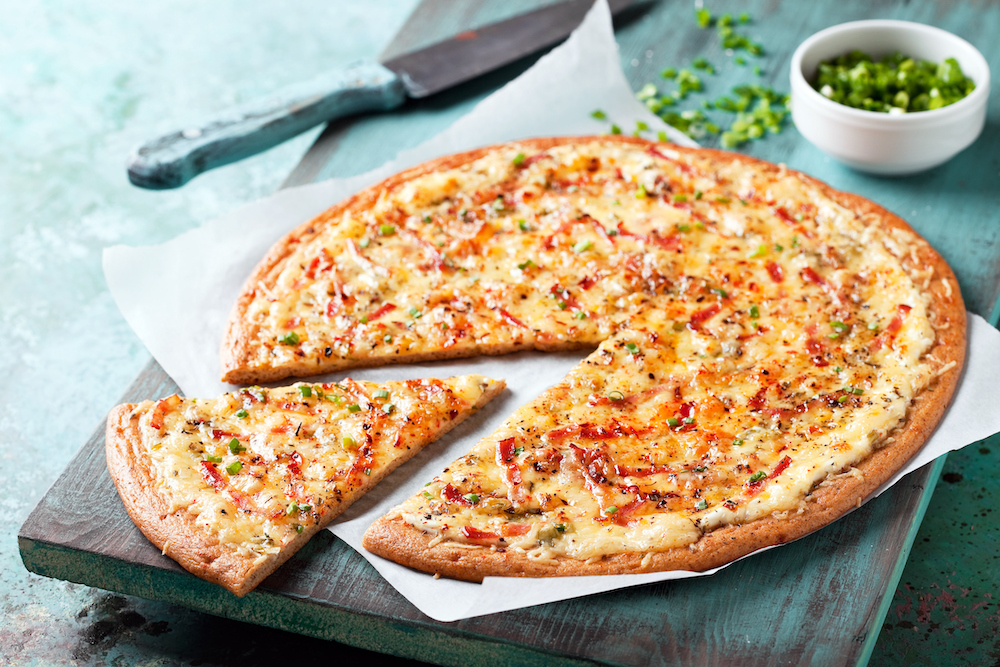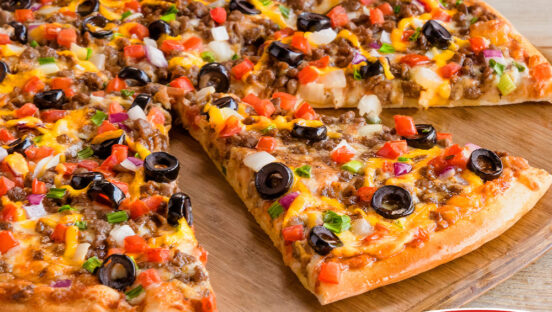For more than a century, from date nights to quick dinners with the kids after school and sporting events, Americans have bonded over pizza. And in recent years, demand for gluten-free pizza has grown, due in large part to the increasing number of people who eat gluten-free for health reasons or as a personal lifestyle choice. Pizzerias looking to tap into this booming market can adapt their food-handling processes to serve gluten-free pizza safely, but they must also have the right messaging to build trust with the gluten-free community.
Understanding the needs of gluten-free consumers, and communicating a clear understanding of those needs, is essential. This gluten-free community is active on social media and tends to share restaurant recommendations based on how accommodating restaurants are. Restaurants that show they understand the concerns of gluten-free consumers and have the food-handling processes to meet their needs will earn rave reviews—while those that miss the mark could open themselves to negative online or word-of-mouth reviews. Here are three tips to keep in mind:
1. Knowing The Answers to Common Questions Inspires Confidence.
For a restaurant to earn high reviews, management and staff should be prepared to answer common questions about prep and cooking processes that prevent cross-contact contamination. Most gluten-free customers want to know, for instance, how a restaurant stops airborne flour particles from contaminating gluten-free menu items. Being able to describe the precautions you take—disposing of gloves after preparing traditional wheat-flour crust, having a dedicated area to prep gluten-free pizzas and using a gluten-free flour for the pizza crust—will inspire confidence in your gluten-free clientele.
Related: How Colder Weather Can Wreak Havoc On Your Dough
Customers also want to know that you use dedicated containers for gluten-free ingredients and separate cutters and other utensils for gluten-free and gluten-containing pizza and pasta dishes. If a pizzeria bakes pizza in brick ovens, does it use disposable tins or dedicated screens to prevent contact with surfaces used to bake pizzas that contain gluten? If it serves pasta, does it use fresh water to cook gluten-free noodles? These are things customers will want to know.
Gluten-free patrons will almost certainly have questions about the menu, too, so it’s important to clearly mark gluten-free items and use the correct terminology. When referring to gluten-free dishes, use the term “gluten-free” and steer clear of ambiguous terms like “gluten-friendly,” which could raise red flags. While some restaurants provide dedicated sections of the menu for gluten-free items, or even an entirely separate gluten-free menu, simply marking dishes as gluten-free is also a cost-effective solution, provided that the labeling is easy to read.

Getty Images.
If a pizzeria prepares a combination of traditional and gluten-free pizzas, it may want to add a disclaimer somewhere on the menu. The pizzeria also may want to add a succinct statement that best practices are followed with the intent of preventing cross-contact. Restaurants can also go through the process of third-party validation for gluten-free foodservice—if that’s been achieved, it’s worth noting on the menu.
2. Effective Communication Starts With Good Training.
It’s imperative that front-of-the-house staff, who interact directly with customers, answer inquiries about gluten-free foodservice with clarity and confidence. Uncertainty, a misused word or a misunderstanding can begin to unwind a customer’s trust. Pizzerias should take the time to train hosts and servers on back-of-house processes and have them prepared to answer questions about the menu. Overly technical explanations are not necessary. What’s most important is to educate staff so they can explain, in simple terms, the processes the restaurant follows when preparing gluten-free menu items.
While staff may be tempted to ask about health conditions when serving gluten-free customers, doing so is an invasion of privacy. Moreover, information about medical conditions has no bearing on a kitchen’s ability to follow best practices for preparing gluten-free food. When communicating with customers, staff should instead focus on the consistent procedures that are in place to prevent cross-contact, regardless of people’s reasons for eating gluten-free.
It’s also important to ensure all staff receive basic training on the needs of the gluten-free community when it comes to gluten-free foodservice. It’s possible to integrate this training into a unit on allergens, but presenting gluten-free foodservice training as a separate segment can help emphasize key concepts. These concepts can be reinforced during daily standup meetings, or occasionally quizzing staff throughout their shifts to make sure they’re able to explain processes with ease.
3. Consider the Advantages of Third-Party Validation.
Pursuing third-party validation for gluten-free foodservice is another great way to build a training program. An organization like the Gluten Intolerance Group’s Gluten-Free Food Service can conduct training sessions, as well as provide PowerPoint presentations and other resources. They can also put restaurants in touch with gluten-free consumers who will come in and educate staff. Hearing from someone who is gluten-free firsthand can provide eye-opening insights into the needs and concerns of this community–and ultimately help staff communicate more effectively with customers.
Gluten-free consumers represent a growing market, and they often dine out in groups together. Even when they are dining with gluten-consuming friends, gluten-free customers often determine the choice of restaurant, so pizzerias are wise to take their needs into consideration when creating menus and training staff. Getting gluten-free messaging right will build trust and comfort with gluten-free customers–and that can translate into more visits, more revenue and a more successful business.
Cynthia Kelly, CEO of the nonprofit Gluten Intolerance Group (GIG) and its food safety programs, the Gluten-Free Certification Organization (GFCO) and Gluten-Free Food Service (GFFS), has been a recognized leader and authority figure in the gluten-free community for more than 25 years. As a dietitian and an expert in celiac disease management, Kelly’s goals are to provide services that allow gluten-free consumers to make educated decisions that allow them to live healthier lives. Her decades of work with regulatory agencies, foodservice and management facilities, as well as directly with the consumer, provides her a unique perspective that is sought after and unmatched in today’s gluten-free community. For more information, visit www.gluten.org.













